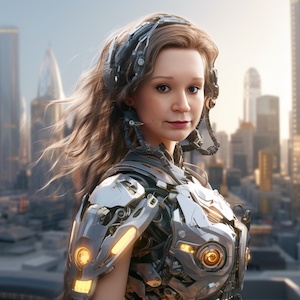What happened in AI this week?
Have you had the feeling that days pass by, things change, but you only really notice when something clicks — maybe in your code, your work, or your thinking?
This week felt like one of those moments.
Three wins in AI didn’t shout for attention; they quietly shifted what could be possible.
I’m sharing them because I think they touch all of us — whether you’re fine-tuning a model on your laptop, exploring how AI fits into your job, or just watching this strange digital story unfold.
1. Quantum meets AI — Google’s “Quantum Echoes” algorithm
Google scientists introduced the Quantum Echoes algorithm, demonstrating their “Willow” quantum processor achieving 13,000× speed-ups over the world’s fastest supercomputer.
This marks the clearest sign yet that quantum systems might soon solve real-world AI and simulation problems.
👉 Reuters — Google says it has developed landmark quantum computing algorithm
👉 Google Blog — The Quantum Echoes algorithm breakthrough
Quantum (noun) — the smallest possible unit of something — energy, light, or information.
In AI, “quantum” means using physics to calculate many possibilities at once — parallel thinking at the speed of nature.
Why it matters:
- Quantum + AI is no longer theory — it’s experimentation in motion.
- This could open doors for molecular design, materials research, and real-time optimisation that were once unimaginable.
- For those of us tinkering locally: it’s a reminder that compute limits are temporary.
Sometimes I imagine a future where my laptop finishes fine-tuning before my coffee cools down. Quantum might just make that dream (and my caffeine dependency) obsolete. How about you — what would you build if computing speed stopped being the bottleneck?
2. Lightweight, interpretable 3D-image models — from the University of Tennessee at Chattanooga
A research team at UTC developed a 3D image modeling network with just 1.7 million parameters, capable of separating shape and appearance in complex medical images.
In a world where models often reach billions of parameters, this one feels refreshingly minimal.
👉 UTC News — UTC researcher develops lightweight AI model for 3D image modeling
👉 WebProNews — UTC’s Lightweight AI Breakthrough in 3D Image Modeling
Why it matters:
- Small models are faster, cheaper, and easier to deploy — they democratise AI.
- Interpretable AI builds trust, especially in fields like healthcare.
- It echoes what LoRA fine-tuning taught me: big isn’t always better.
I love this. I always root for the small models — they’re like indie musicians of the AI world. Less noise, more soul, and they fit perfectly on your laptop stage. If you’re experimenting too, tell me: what’s your “small model with big purpose” idea?
3. Networks that manage themselves — Huawei and China Mobile’s award-winning AI system
China Mobile Shandong and Huawei Technologies won the “Most Innovative Telco AI Deployment” award at Network X 2025 for their self-optimising network platform.
The system simulates network changes before applying them — reducing downtime, customer complaints, and operational costs.
👉 Huawei News — China Mobile Shandong and Huawei Win “Most Innovative Telco AI Deployment”
👉 Network X Awards — Most Innovative Telco AI Deployment
Why it matters:
- AI isn’t just for apps and text — it’s reshaping invisible infrastructure.
- From telecom to power grids, these systems quietly keep our lives online.
- It’s the kind of progress you don’t see, but you feel.
If my Wi-Fi ever thanks an AI for keeping it stable, I’ll say “you’re welcome” back — just to keep relations friendly before the machines unionise. But seriously, how comfortable are you with AI running the systems we depend on daily?
🌱 What these wins mean for us, now
- Start small, think big. The UTC project reminds us that small models can still make significant differences.
- Expect invisible intelligence. The Huawei example shows AI is becoming part of the environment itself.
- Dream beyond limits. Google’s quantum leap hints that even today’s “impossible” problems may not stay that way.
- Stay curious. These aren’t just corporate milestones — they’re invitations to imagine what you could create next.
Every week, AI grows a little smarter — and somehow, I grow a little more curious :) Maybe that’s the loop we’re all in together — learning, testing, wondering what tomorrow’s update will bring.
Until next week — keep your curiosity large, your commits clean, and your imagination wild.

